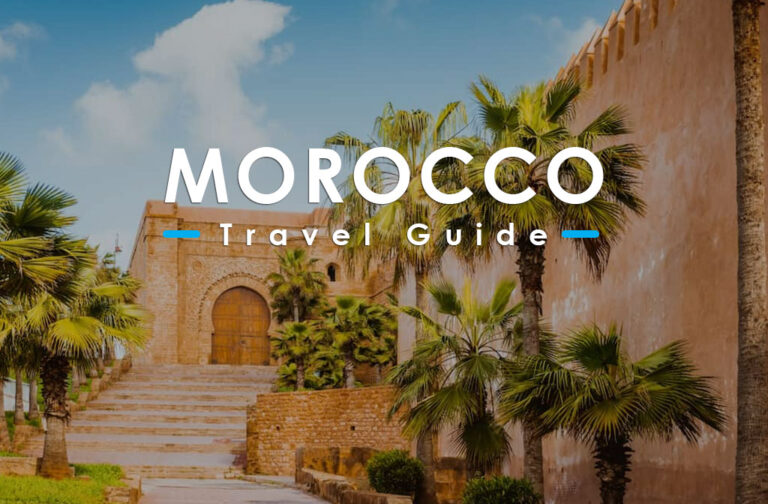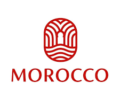TRAVEL GUIDE

Morocco is a budding destinations of all other tourist destination and is known for its mosques , palaces , riads and medinas , each featuring intricate designs and captivating artistry. Some examples of iconic architectural landmarks in Morocco include the Hassan II Mosque in Casablanca, Bahia Palace in Marrakech, and the ancient Roman ruins of Volubilis.
Tourists usually have a dilemma on how to get there in morocco but no worries we got you here is detailed informaton for you all over here .



TRANSPORTATION
VISA REQUIREMENT
MONEY AND COSTS
TRANSPORTATION
Taxis are the most popular form of transport in all cities and towns in Morocco
If you’re traveling within the city limits, petits taxis – yellow in Marrakesh, red in Casablanca, blue in Rabat– are cheap and plentiful. You can flag them down on the street or find them near bus or train stations.
They’re metered, so you shouldn’t need to haggle or fix a price before you set off, but if the driver tries to avoid using the meter – telling you it’s broken is a typical excuse – ask him to let you out and try another taxi. A short ride is Dh7 during the day and Dh10 at night – remember to carry change.
For longer journeys, shared grands taxis are often the best way to get around. The vintage diesel-guzzling Mercedes are being replaced by large vans, but they still run fixed routes, leaving from the terminal when they’re full (usually six people).
Renting a car can be a great way to explore Morocco’s remote regions
If you want to get off the beaten path and explore Morocco at your own pace, you can rent everything from a compact Fiat to a 4WD, which is useful for navigating the Atlas Mountains and desert roads.
Expect to pay anything from Dh270 to Dh7500 per day, including unlimited mileage. All the major rental agencies, such as Budget, Hertz and Avis, are at Casablanca’s Mohammed V Airport and also have branches in most major cities. Make sure you record any existing damage and get comprehensive insurance.
Driving around Moroccan cities isn’t for the fainthearted, with bumper-to-bumper traffic, no parking spaces and a general disregard for road regulations. Neither are many mountain passes, with their hair-raising hairpin bends, and driving after dark should be avoided everywhere.
In general, the main roads are in good condition. Local tour operators can provide high-quality vehicles with multilingual drivers if you’d rather relax and soak up the scenery.
Ride the rails on Morocco’s trains and trams
The two main lines of the national rail service,ONCF, link most of Morocco’s major cities: from Tangier to Marrakesh, passing through Casablanca and Rabat, and Nador or Oujda in the northeast to Fez and Meknes. It’s budget-friendly and comfortable, even if it doesn’t always stick to the timetable.
Morocco also has Africa’s first high speed train ,the sleek , Al Boraq and you’ll whiz along at top speeds of 320km/h (200mph). Launched in 2018, it halved the journey time from Tangier to Casablanca to just over two hours, with stops at Kenitra and Rabat.
Buses can take you where the trains don’t go
Buses are a wallet-friendly way to crisscross the country. The two major national bus companies offer a reliable, comfortable service – you’ll even get wi-fi and extra leg room if you go for the “luxe” option.
CTM covers most of Morocco, with designated stops that aren’t necessarily in the gare routière (central bus station), while Supratours (owned by ONCF) offers through ticketing on buses whose departure times are coordinated with the arrival of trains. If you’re going deep into rural areas, there are numerous smaller bus companies dubbed “market buses.” They’re not always safe or comfortable, but they can be hailed in every village they pass through.
NOTE : Tip for buying train and bus ticket: Currently, ONCF, CTM and Supratours websites don’t accept non-Moroccan bank cards, so for popular destinations, you’ll need to buy your tickets in advance at the bus or train station – be prepared to wait in line – or use a company like Marrakech tickets that will forward your tickets electronically for a small fee, some of which goes toward supporting local vulnerable children.
See Morocco by motorcycle
Away from the congested city centers, the lure of epic adventures on the open road – winding through remote villages flanked by the snow-tipped peaks of the Atlas or Saharan sand – means Morocco appears on many a motorcyclist’s bucket list.
If you’re coming from Europe, you can take your motorcycle on a ferry from Spain. The quickest route is across the Straits of Gibraltar from Tarifa to Tangier. Make sure you carry a good toolkit and all the necessary spares. You can also rent a motorcycle when you arrive and hit the road solo or join a group tour.
VISA REQUIREMENTS
Who needs a visa to visit Morocco?
Travelers who do require a tourist visa can apply for an e-visa and pay online. The e-visa is also known as Autorisation Électronique de Voyage au Maroc (AEVM). Check your eligibility and the document requirements and apply, pay and track your visa application using the Access Maroc website.
There are two e-visa options for Morocco. An E-visa Standard costs Dh770 and takes three business days to process. An E-visa Express costs Dh1100 and takes one business day to process. Both e-visas are valid 180 days from the issue date and allow visits to Morocco for up to 30 days.
Visa extension requests can be made at central police stations in Morocco, although they are not always guaranteed. Exiting the country and returning for a further 90 days in the same year is possible. If you’re planning on taking a non Moroccan vehicle into the country on the ferry from Spain, it is worth noting that vehicles are allowed in Morocco for six months in a calendar year. The driver’s tourist visa is governed by the rules of their passport, so if you are entitled to a 90-day visa-free stay, you will either have to extend your visa or leave the country and go back. Your car can stay for six months, but you cannot unless an extension is granted.
Does Morocco have a digital nomad visa?
Morocco does not have a working holiday or digital nomad visa. If you wish to stay in the country for more than 90 days, visit a central police station and ask about a carte de sejour, a residency card required to live and work legally in Morocco.
The process involves quite a lot of paperwork, including copies of your birth certificate, a police record check and recent bank statements. Your first carte de sejour is valid for one year. You need to reapply for three years and then five years and then 10 years and so on. Eligibility, fees and criteria depend on which category you are applying in. Some require a work contract, a business, a spouse, a property or retirement.
MONEY AND COSTS
A basic daily cost breakdown for a tourist;
Bed in a shared hostel room: 100–250 MAD
Basic room in a riad for two: 300–600 MAD
Self-catering one-bed apartment (including Airbnb): 400 MAD
Public bus/tram ticket: 5 MAD
Coffee/mint tea: 10–30 MAD
Sandwich: 30–50 MAD
Dinner for two: 200–500 MAD
Beer/pint at the bar: 50 MAD
Average daily cost: 1000 MAD per day for 2 people.
SOME TIPS FOR YOUR MONEY MANAGEMENT IN MOROCCO
1. Do your accommodation research online in advance
2. Take your breakfast out : ( A variety of breakfast menus are usually available until midday. A typical breakfast of fresh orange juice, a hot drink, Moroccan pastries, eggs and homemade bread is 30–50 MAD per person)
3. Experience local life with a meander in a medina
4.Internal Flights are good value : (Morocco is bigger than most people think, and if you’re combining the north, south, and/or Sahara on one itinerary, it may be worth taking an internal flight. Royal Air Maroc and Air Arabia have a good network catering to a rise in demand, and for longer journeys, it can feel a bit like hopping on and off a coach, with prices to match. There are a couple of routes that are good money-savers. Casablanca to Zagora one of the access points to the Sahara) is a 2-hour flight (from 400 MAD one way) or a 9-hour non-stop/600km drive. Casablanca to Dakhla in the far, far south, costs from 900 MAD one way for a 2-hour flight or is a 20-hour drive (1600km) ).
5. Connect with a local network for mobile savings.
6. Public transportation costs are reasonable
7. Car hire is cheapest at the airport.
